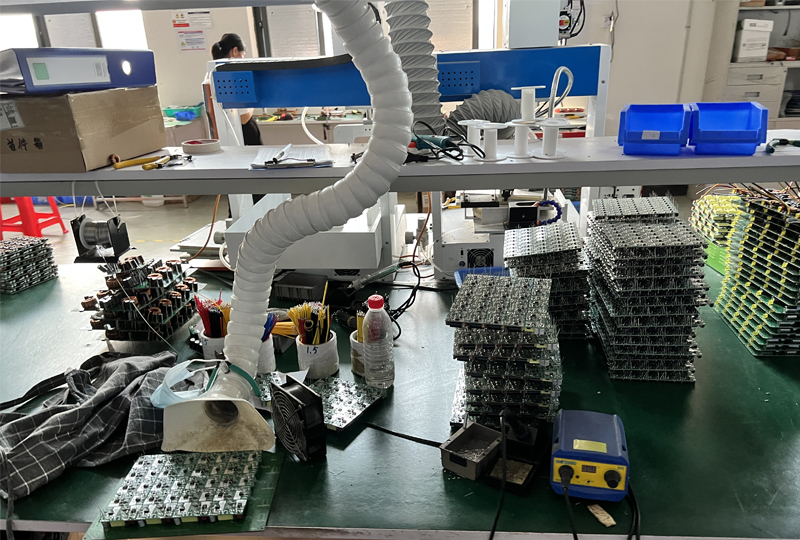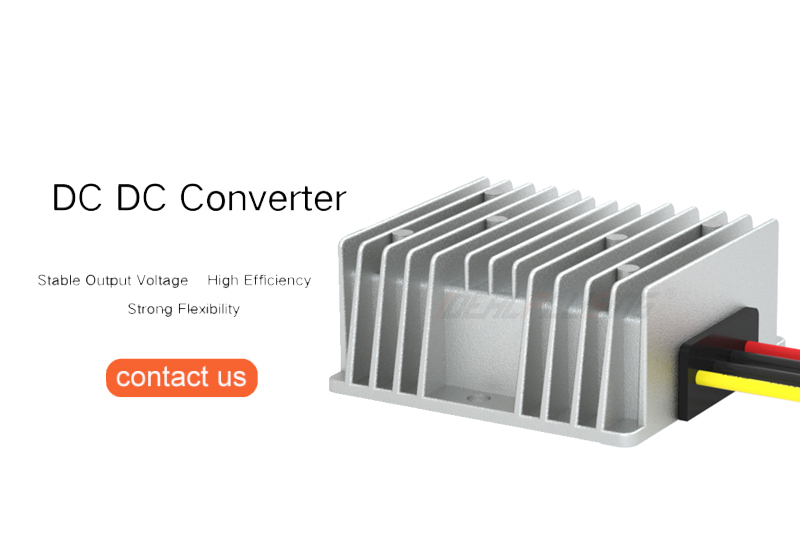The reasons why high-frequency noise far higher than the switching frequency is generated in the output of the boost power supply will be explained from the perspectives of "the operation of the boost DC-DC converter", "the inductance component in the output capacitor and wiring", and "the output capacity and ringing of the low-side switch".
Operation of the boost dc/dc converter

In the boost DC-to-DC converter, when the low-side switch is turned on, the inductor current increases and accumulates energy; when the low-side switch is turned off, the accumulated energy is released, causing the inductor to generate a high voltage due to the back electromotive force, and finally forming an output voltage higher than the input voltage.
During the switching operation, the high-speed changes in voltage and current generate high-frequency vibrations, which become high-frequency noise and are transmitted and radiated through the output line, causing failures.
First, let's understand the detailed operation of the low-side switch from on to off. When the low-side switch FET is fully on, the resistance between the drain and the source is the resistance value of RDSON, and the drain voltage is "RDSON×inductor current".
From this point on, when the gate drive of the FET turns off, the resistance value between the drain and the source increases, and the drain voltage also starts to rise.
When the low-side switch is turned off, a capacitive component COSS is generated between the drain and the source, and part of the inductor current is used to charge COSS.
Due to the conduction loss caused by the current flowing through the resistance component between the drain and the source, and the amount of charge charged into COSS, part of the energy is lost, and at the same time, the drain voltage continues to rise.
When the voltage VSW of the switch node becomes higher than the output voltage, the high-side switch rectifier diode is forward biased. Even if the forward bias voltage is higher than the VF of the rectifier diode, the current does not start to flow due to the conduction delay of the rectifier diode, and the drain voltage rises to a voltage higher than "output voltage + VF".
After a conduction delay of several ns, the rectifier diode becomes conductive and the inductor current starts to charge the output capacitor.
Output capacitor and inductance component in wiring
Due to the conduction delay of the rectifier diode, VSW, which has risen to a higher potential than the output voltage, is applied to the output capacitor, and the output capacitor begins to be charged quickly due to the large potential difference.
Until then, the output capacitor has been supplying current to the load by discharging, but from this point on, it will be charged by the inductance current. From discharge to charging, the current flowing through the capacitor changes to the opposite direction at a speed of nanoseconds.
The inductance component ESL of the capacitor is several nH to tens of nH, but according to the formula ΔV=ΔI×L/ΔT composed of the change value ΔI (in A) of the charge and discharge current and the change speed ΔT (in ns), a back electromotive force ΔV is generated within the time of ΔT, and a high voltage is also generated in the output capacitor.
Therefore, the output capacitor will generate a spike-like high voltage immediately after the rectifier diode is turned on.
Output Capacitance and Ringing of Low-Side Switch
COSS is charged to the point where a spike-like high voltage is also generated in the output capacitor, and then the energy stored in COSS is released and flows into the output capacitor, and is stored in the inductor component ESL in the form of magnetic energy.
When the voltage of COSS drops to the potential of VOUT through discharge, the potential difference disappears, and the magnetic energy in ESL stops increasing. Using the magnetic energy previously accumulated by ESL, a constant current state is entered, and charge is continued to be drawn from COSS, and the voltage of COSS drops below VOUT.
As the COSS voltage decreases, the magnetic energy of ESL decreases, and when the magnetic energy reaches 0, COSS stops discharging. At this time, the potential of COSS is lower than VOUT, and the current flows in the reverse direction from the output capacitor to the COSS of the low-side switch, charging COSS, and at the same time, the magnetic energy in the opposite direction to the previous direction begins to accumulate in ESL.
Thereafter, energy repeatedly moves between the COSS of the low-side switch and the output capacitor ESL, and an oscillating state caused by the reciprocation of voltage and current is generated. Strictly speaking, the inductance component is the LC resonance caused by the sum of the ESL and the inductance component of the loop through which the charge and discharge current flows, L, and the COSS of the low-side switch, and the resonant frequency FZ is FZ = 1/2π√(L×COSS).
The total inductance component is several nH, and the capacitance of COSS is tens to hundreds of pF, so the resonant frequency is usually in the range of tens to hundreds of MHz. The ringing generated at the switch node and the output capacitor will become high-frequency noise, which will propagate through the power supply output line and cause malfunctions such as malfunctions in the load circuit.







